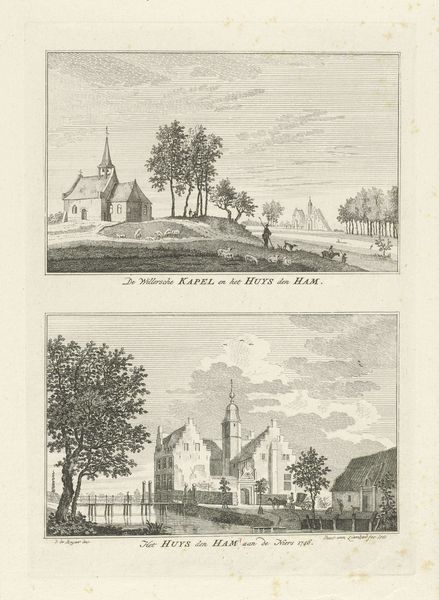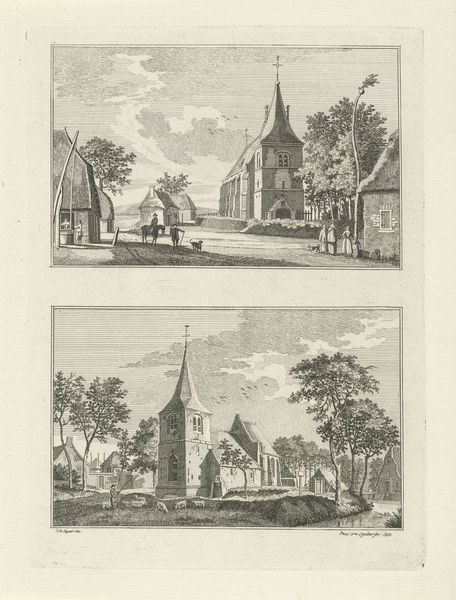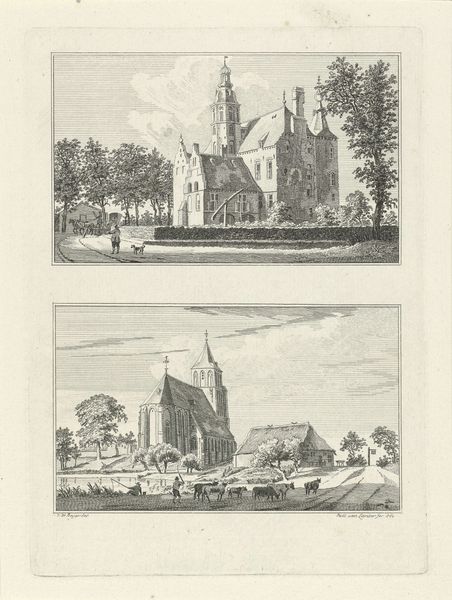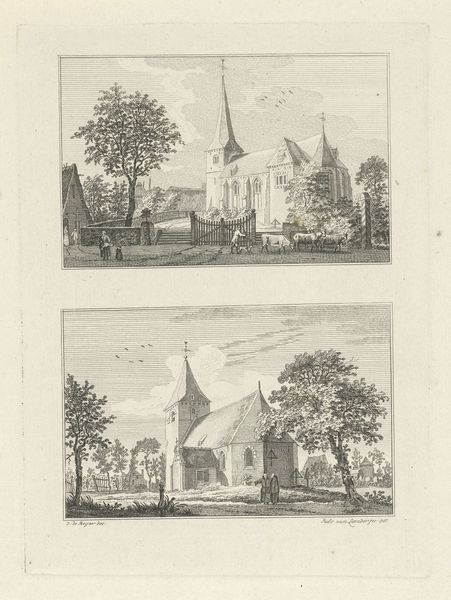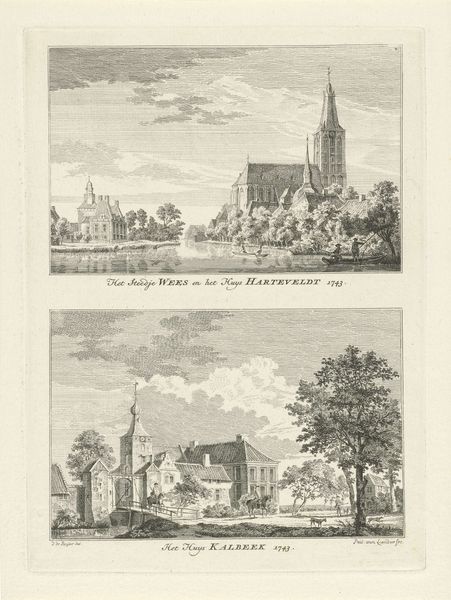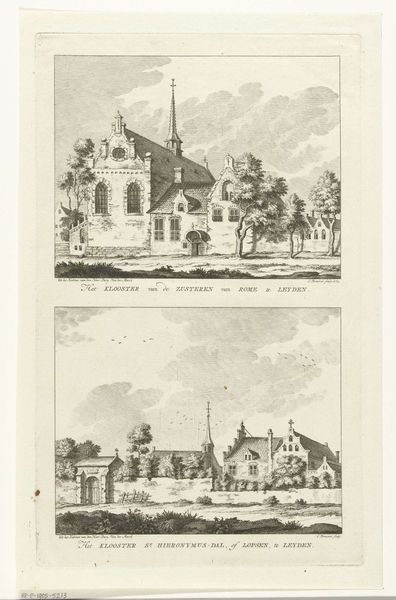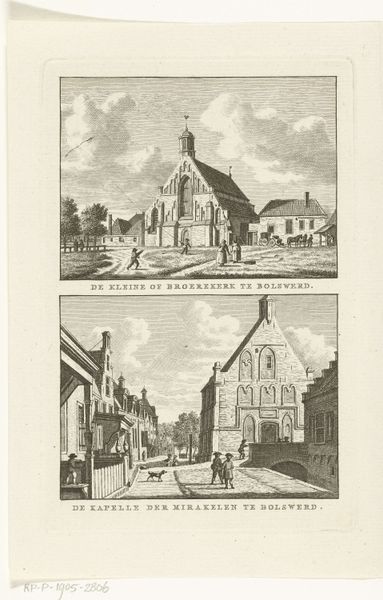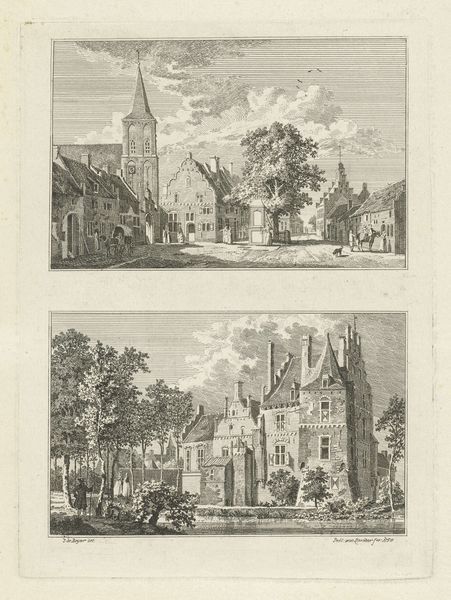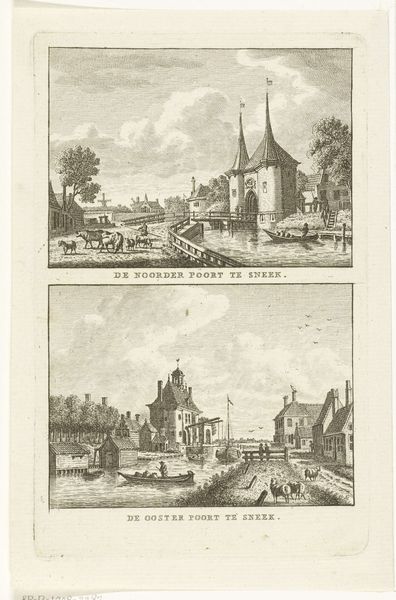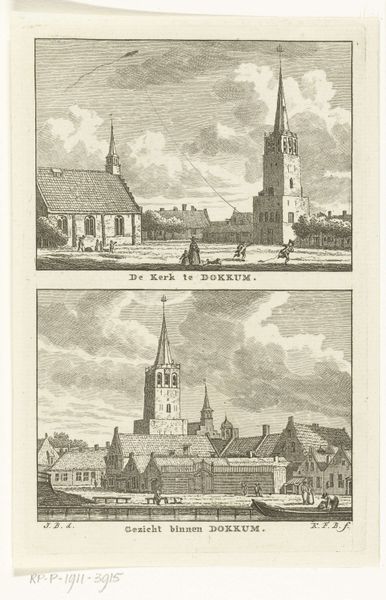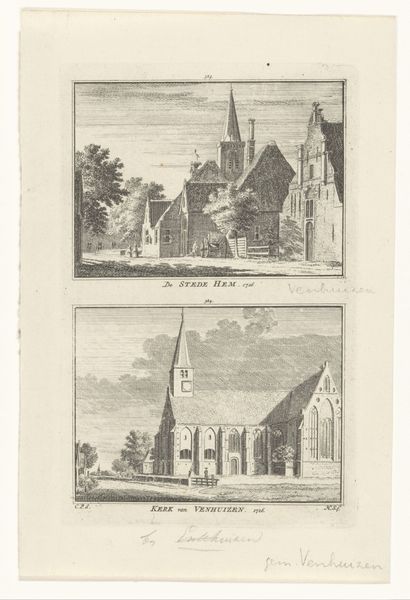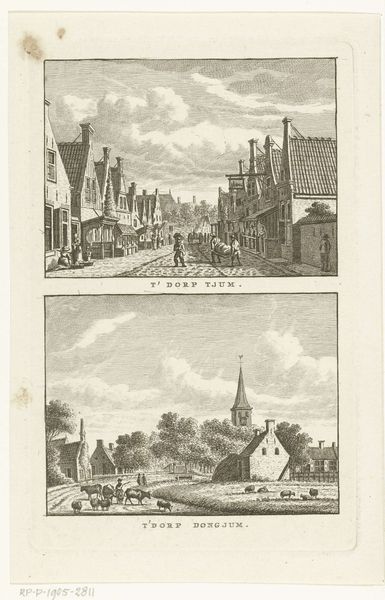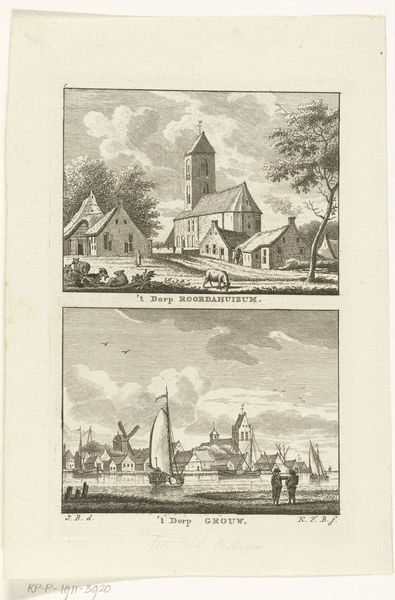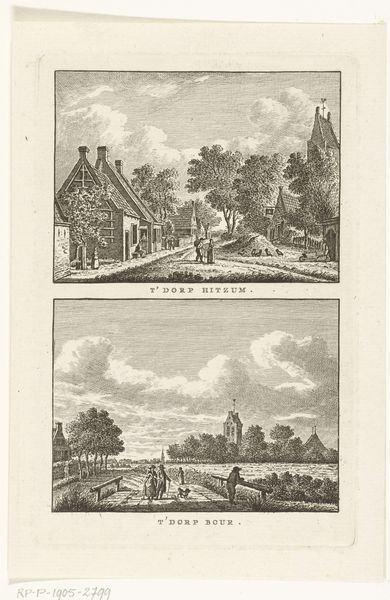
print, engraving
#
dutch-golden-age
# print
#
landscape
#
line
#
cityscape
#
genre-painting
#
engraving
Dimensions: height 201 mm, width 147 mm
Copyright: Rijks Museum: Open Domain
Editor: Here we have "Dorpsgezichten te Hanselaer en Appeldorn, 1746," or "Village Views of Hanselaer and Appeldorn, 1746," by Paulus van Liender. It's an engraving. I'm struck by how orderly and serene both scenes appear, almost like architectural blueprints. What stands out to you from a formalist perspective? Curator: Immediately, it's the strategic deployment of line. Notice how the engraving technique, with its meticulous hatching and cross-hatching, defines form and space. Van Liender isn't just representing these villages; he's constructing them through a network of precise marks. The repetition of vertical lines in the trees, for example, creates a rhythm, a visual echo, that structures the landscapes. Editor: So, the lines aren't just descriptive; they actively build the composition. What about the arrangement of the two village scenes themselves? Curator: The diptych arrangement invites a comparative analysis. Note the differences in perspective. The upper scene presents a slightly elevated view, giving a sense of distance. The lower view is closer, more intimate. This shift alters our relationship to the spaces. Further, observe the interplay between open and closed forms, solid and void. What does that juxtaposition suggest to you? Editor: Perhaps a dialogue between the public and private spheres of these villages? The church dominating the skyline versus the domestic scenes closer to us? Curator: Precisely. Van Liender’s choices encourage us to consider how formal elements can articulate conceptual dichotomies. Do you see any dominant structural relationships beyond verticality? Editor: Well, the placement of the churches – mirroring each other in the upper left and lower center—creates a strong focal point in both compositions. They use framing as a compositional strategy. Curator: Precisely. Studying such devices illuminates the calculated nature of visual presentation, reminding us that artistic choices dictate meaning. What are your final thoughts on the construction of space and architectural elements? Editor: Thinking about how the linear perspective and calculated arrangement work together, I appreciate how deliberate and constructed these seemingly simple village views are. It shifts my focus from subject to structure. Curator: A fitting observation, demonstrating the profound impact of line, form, and structure within Van Liender’s engravings.
Comments
No comments
Be the first to comment and join the conversation on the ultimate creative platform.
